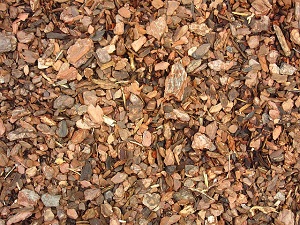Mulch as soil cover.

MOMENT OF INNOVATION..
Stakes.
INNOVATION STATUS.
Mulch practice consists of applying organic cover to the soil of the plot. Different materials can be used for this cover, with different consequences. The expected objectives of mulching (1):
- Control runoff and soil erosion
- Improve ground lift for gear passage
- Add organic matter and nutrients
- Weed control (2)
In the context of climate change, mulch applied to vine rows or the entire plot can help reduce water stress by limiting evaporation, thereby retaining soil moisture, and improving water infiltration during rare rainfall events (limiting the formation of an impermeable soil crust).
Different organic materials can be used as mulch:
- The “fragmented ram wood” (FRW) consists of a shredding of young woody deciduous branches. The FRW can come from internal wood deposits (shredding of hedges, vine shoots, etc.) or external (gardening, common, forests, scrubland, clearing) (3)
- Seed-free weeds (to prevent regrowth), which can be mowed from plot (4) by crushing inter-row biomass, for example
- Straw and bark from crop residues or other sources
The benefits of the mulch remain strongly linked to the type of biomass used (more or less rich in carbon, nitrogen or minerals), and to the cultural context. The quantities to be brought are important to obtain a cover of at least 5 cm, from which one can hope to limit the development of weeds (5). It is therefore necessary to anticipate the cost of the biomass itself, and of the operation of incorporation into the plot. The mill can also generate weeds, or shelter slugs and other pests. In addition, maintaining moisture below the row can promote the development of fungal diseases.
Mulching usually goes hand in hand with the implementation of simplified cultivation techniques or even non-labour. More general contributions to soil conservation or to the long-term restoration of organic matter and biodiversity appear to be more substantial.
Authors : Marc Nougier (SupAgro), Audrey Naulleau (INRAE)
References:
- http://www.afpp.net/apps/accesbase/bindocload.asp?d=6002&identobj=bgSjCUYQ&sid=..&idk=1
- http://www.vignevin-occitanie.com/wp-content/uploads/2018/10/3-paillage-sous-rang.pdf
- https://occitanie.chambre-agriculture.fr/fileadmin/user_upload/Occitanie/076_Inst-Occitanie/Documents/Productions_techniques/Agriculture_biologique/Espace_ressource_bio/Maraichage_bio/Pluri-espece/Fertilisation/BroyatsBranchages-PACA-2012.pdf
- https://fermesdavenir.org/fermes-davenir/outils/mulch-paillage
- https://geco.ecophytopic.fr/concept/-/concept/voir/http%253a%252f%252fwww%252egeco%252eecophytopic%252efr%252fgeco%252fConcept%252fPaillage_Sous_Le_Rang_En_Vigne